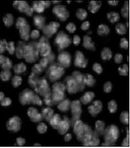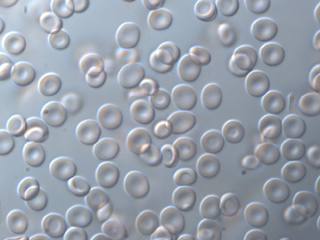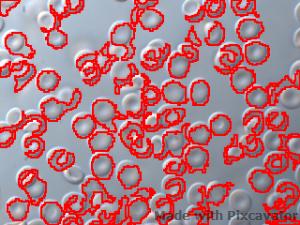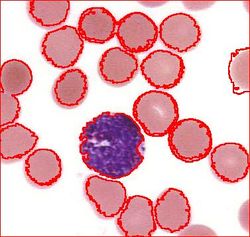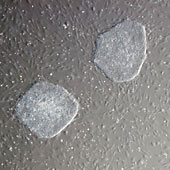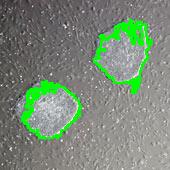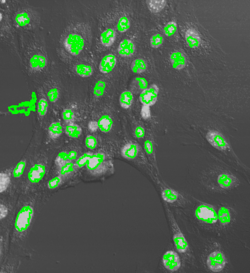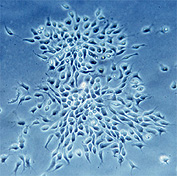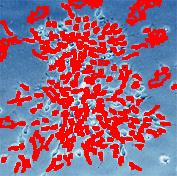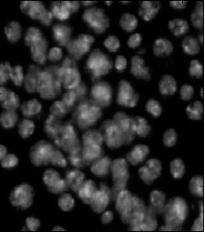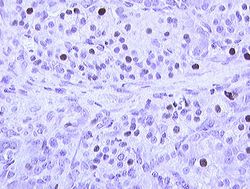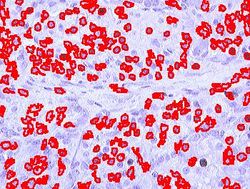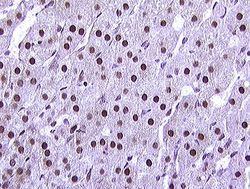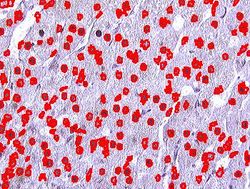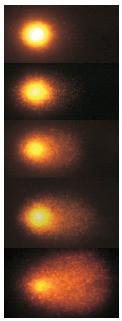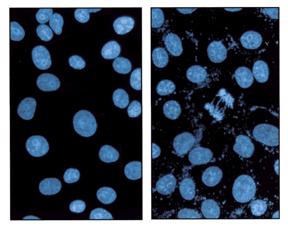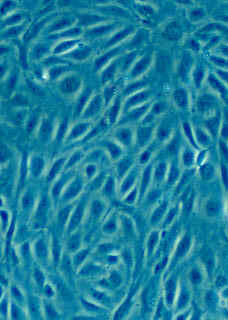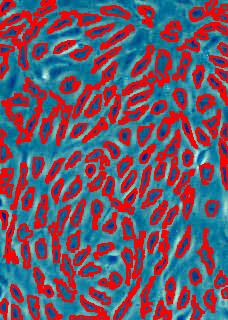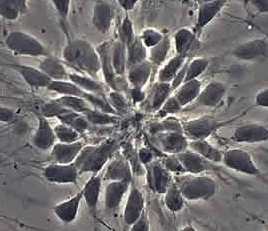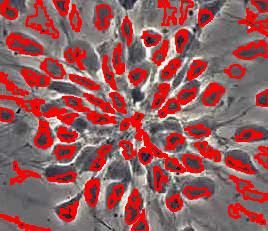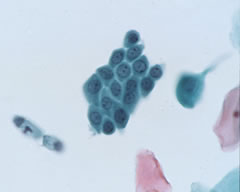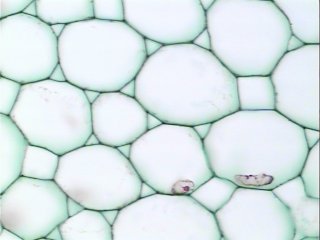This site is being phased out.
Cell counting
The article is about counting cells and other particles with our image analysis software, Pixcavator.
Contents
Our approach to cell counting and classification
Counting cells is a task common in biology and pathology image analysis. Cell counting/identification is then a segmentation problem for microscopy images. Many researchers have solved this problem using different strategies such as gray scale watershed, level-sets, and other methods.
We use algebraic topology instead.
Topology is the science of continuity and connectedness that studies spatial relations within the image. Algebraic topology in particular treats these issues by means of algebraic operations on the pixel/edge/vertex level. The topological analysis and decomposition of the image is carried out through computation of the so-called homology groups. These structures consist of cycles/contours around cells and record the way the image is segmented.
The algorithm is explained under Binary Images and Grayscale Images. For details, see
- P. Saveliev and A. Pahwa, A topological approach to cell counting, Proceedings of Workshop on Bio-Image Informatics: Biological Imaging, Computer Vision and Data Mining, 2008, Center for Bio-Image Informatics, University of California - Santa Barbara, USA, January 17-18, 2008.
- P. Saveliev, A graph, non-tree representation of the topology of a gray scale image, in Image Processing: Algorithms and Systems IX, edited by Jaakko T. Astola, Karen O. Egiazarian, Proceedings of SPIE Vol. 7870 (SPIE — The International Society for Optical Engineering, Bellingham, WA 2011) 78700O, O1-O19.
Software
The topological approach has important consequences that make Pixcavator especially appropriate for the task of cell counting.
- First, the cell count is independent of their location.
- Second, the measurements of cells are independent of their orientations with respect to the image grid.
- Third, the algorithm captures all cells regardless of their sizes, shapes, and locations. The analysis is "lossless".
Other tasks related to analysis of cells:
- Cell classification. Pixcavator evaluates the geometry of the cells so one can classify them based on that. These are the two main geometric characteristics: area and roundness (in the future we'll have higher moments as well). There is also intensity and contrast. One can also classify them based on color -- by choosing the appropriate color channel.
- Cell/nuclei ratio. One can count nuclei separately from cells - you just need to find appropriate settings for the sizes of objects to be captured.
- Cell walls. There is no feature for that in Pixcavator at this time. However, you can capture the inside and the outside contours of cells and then subtract the inside area from the outside and then divide by the average of the two perimeters. This will give you a decent estimate of the thickness if the contours aren't too rugged. Consider this example of measuring of the wall of a blood vessel as well as Hose measurements.
- Cell distribution. The centers of cells are provided, so the distances can be computed for all pairs of cells. Then the histogram of the distances can be build with Excel. This is a good example of such analysis: Membranes containing proteins.
There are other ways to do statistical analysis with Pixcavator's output data, see Report generation.

Examples
Blood cells
Stemcells
Nuclei
Comet DNA
Other cells
I don't have a special source of images, so virtually all images in this wiki came from our users or were copied from the internet. Here is a zipped collection of cell images. All original sizes and formats. Warning: some of them may be copyrighted!
Other image analysis examples
